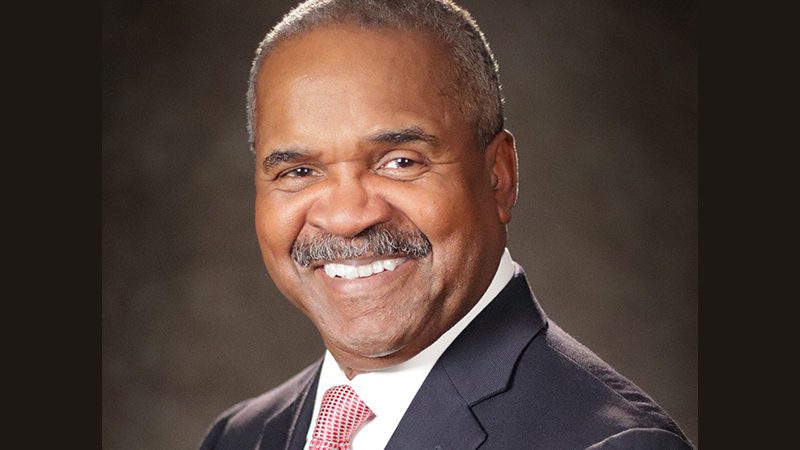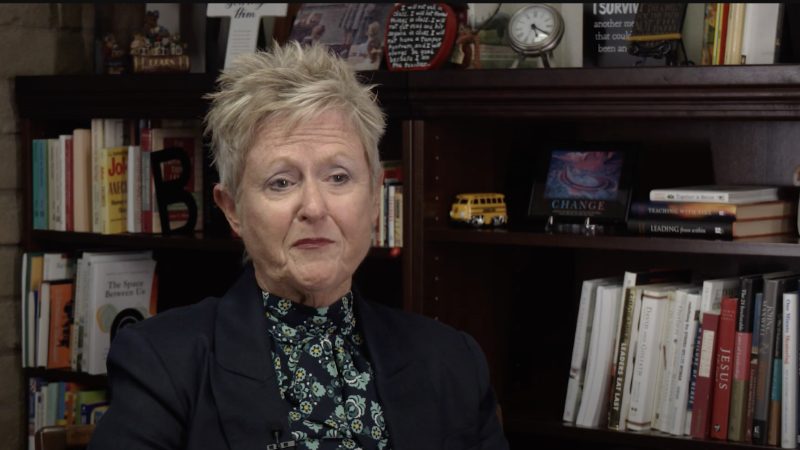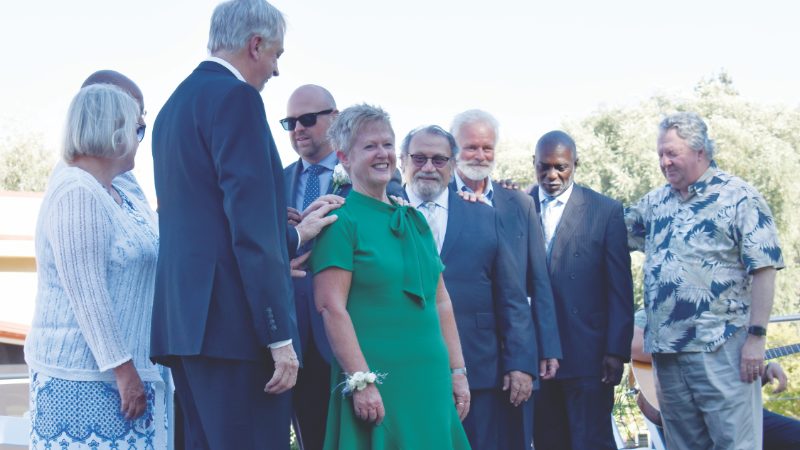By the Recorder editorial staff

After the initial emphasis on sending out missionaries directly from the West, the newly formed Pacific Union Conference championed the program with the result that a wave of missionaries went all around the world. Union president A.T. Jones explained:
The camp-meeting and conference at Fresno, September 30 to October 12, proved to be a missionary meeting throughout. From the president's address at the beginning, until the second ordination service at the very close of the meeting, the keynote was “Foreign fields,” “The gospel in all the world as a witness to all nations, that the end may come.”…
Space will be taken here only to state that eighteen of the workers of the California Conference accepted the call to other fields. Five thousand dollars, and at least thirteen and one-third per cent of the income of the conference in the coming year, and the support of every worker of the conference sent by the conference to foreign fields, was unanimously voted by the whole congregation. About a hundred and ninety dollars was freely donated by those present from their own pockets to send a 40x60 tent to Elder Andross in England. More than a hundred dollars was donated in a Sunday afternoon collection for the work in the South; and nearly seven hundred dollars was given to the material fund of “Object Lessons.” In other words, all calls and donations were for the general work, none for the local.1
The membership in California knew these missionaries and were interested not only in their accomplishments but in them as individuals.
The size of the donations that express the commitment to mission is significant. Not only the financial aspects but also the willingness to part with successful pastors and evangelists show the desire that the truth be shared way beyond the borders of the union. The workers who went abroad were still listed as conference employees, and they received their salaries as if they were working at home. Such a system came from the global awareness of the believers who saw their task as not merely working for the people of the West but for all people everywhere.

Jones then listed some of those he knew who were going out as missionaries from the Pacific Union and being supported and paid by the conference. Notice the countries mentioned: “The workers who go abroad are: Brother and Sister J.S. Harmon, to Ontario, Canada East; Brother and Sister Schaeffer and Brother Douglass, to the South; Brother and Sister McCord, and Brother and Sister Castle, and Brother Walter Halliday, to England; Brother and Sister Albrecht, to Germany; Brethren Walter and Frank Bond, to England on the way to Spain; Brother A.S. Marchus, to England on the way to Natal, South Africa; Brother F. Dewitt Gauterau, to France; Brother D.A. Parsons, to Ireland, and Dr. Keem, to China.”2
The following month Jones reported on those who had actually gone as missionaries, showing that this was no pipe dream, but a solid reality—these people were going to places they did not know, to work with people they had never met, sometimes in languages they could not speak! Yet they were going, and those back home were supporting them. Those who had gone or who were about to go were listed, along with their destinations: England, Ireland, Italy, Georgia, France, Spain, South Africa, Germany, Canada, China—it was as if the West was evangelizing the world! Jones also notes that “Nearly all of those are still California workers, to be paid from the California treasury after they reach their foreign fields.”3
This was not only a wonderful example of a benevolent spirit—just as importantly, it gave a close connection with the real world of mission work. The membership in California knew these missionaries and were interested not only in their accomplishments but in them as individuals.
In this way a strong bond could be formed between donors and recipients, without extensive bureaucracy. Jones says it very expressively:
This gives to the people of the California Conference a personal hold in missionary effort upon a goodly part of the world. The California Conference is thus sending its workers to the East in both directions. But surely this is the only thing to do. There are in the California Conference only about one and a quarter millions of people altogether. In the British Isles, alone, there are forty-two millions; and in the other countries many more, as they are larger. In those countries there are very few Sabbath-keepers, and far fewer active preachers of the message. Should we keep here, where there are so few people, the many workers, when we have also nearly four thousand Sabbath-keepers besides?4
In a later article he concluded: “California is the only conference that has done as it has done. True, the movement is spreading; but no other conference has yet set free all workers who will go to foreign fields, to be paid as such the same as if they worked in the home field. Therefore, even if this plan were enough when universally employed, it is plain that as yet it can not, in any fair degree, be counted a proper working of the foreign fields. Therefore all other means must likewise be employed.”5
Notice the infectious zeal and enthusiasm! California did not wait to be asked, or for administrative approval. They went ahead and sent their workers as needed. Clearly some were alarmed that the worker force was being depleted with so many pastors and evangelists going on mission service. Ellen White, who was at that latter meeting, replied by saying: “Some of the members of our churches may feel that we are sending away too many conference laborers, and that the work in the home field can not be done by the few who remain. But this is not the proper view to take of the matter. Those in the employ of the conference are not the only ones who should work for souls. Let the church-members go to work.”6
Such a model of mission work is clearly at significant variance to the current centralized system, yet it was proved at the time to be a very efficient way of operating that linked local workers with their local home field. Certainly a considerable amount of foreign mission work was down to the commitment, both in personnel and funding, provided by an enthusiastic and committed membership and worker force in the West.
_____________________________
1 Alonzo T. Jones, “The California Camp-Meeting,” Pacific Union Recorder, Oct. 23, 1902, p. 4.
2 Jones, “The California Camp-Meeting,” pp. 4-5.
3 Alonzo T. Jones, “To the People of the California Seventh-Day Adventist Conference,” Pacific Union Recorder, Nov. 20, 1902, p. 2.
4 Jones, “To the People of the California Seventh-Day Adventist Conference,” p. 2.
5 Alonzo T. Jones, “Dear Brethren and Sisters of the Sabbath-Schools—",” Pacific Union Recorder, Feb. 12, 1903, p. 8.
6 Ellen G. White, “Sending Missionaries Abroad,” Pacific Union Recorder, Nov. 20, 1902, p. 4.
Pioneros adventistas en el oeste: Una ola de misioneros
Por el personal editorial del Recorder

Después del énfasis inicial en enviar misioneros directamente desde el oeste, la recién formada Pacific Union Conference defendió el programa con el resultado de que una ola de misioneros recorrió todo el mundo. El presidente de la unión, A.T. Jones, explicó así:
El campestre y la conferencia en Fresno, del 30 de septiembre al 12 de octubre, resultaron ser una reunión misionera en todo momento. Desde la presentación inicial del presidente, hasta el segundo servicio de ordenación al final de la reunión, el mensaje de apertura fue «Campos extranjeros», «El evangelio en todo el mundo como testimonio a todas las naciones, para que venga el fin…»
Se dedicará espacio aquí sólo para declarar que dieciocho de los obreros de la California Conference aceptaron el llamado a otros campos. Cinco mil dólares, y por lo menos el trece y un tercio de los ingresos de la conferencia en el año siguiente, y el apoyo de cada obrero de la conferencia enviado por la conferencia a campos extranjeros, fue votado unánimemente por toda la congregación. Alrededor de ciento noventa dólares fueron donados libremente por los presentes de sus propios bolsillos para enviar una carpa de 40x60 al pastor Andross en Inglaterra. Más de cien dólares fueron donados en una colecta el domingo por la tarde para la obra en el sur; y cerca de setecientos dólares se destinaron al fondo material de «Lecciones Prácticas». Es decir, todos los llamados y donaciones fueron para la obra general, ninguno para la obra local.1
El tamaño de las donaciones que expresan el compromiso con la misión es significativo. No solo los aspectos financieros, sino también la disposición a separarse de pastores y evangelistas exitosos muestran el deseo de que la verdad se comparta más allá de las fronteras de la unión. Los obreros que se fueron al extranjero seguían figurando como empleados de la conferencia, y recibían sus salarios como si estuvieran trabajando en casa. Tal sistema surgió de la consciencia global de los creyentes que veían su tarea no solo como trabajar para la gente en el oeste, sino con todas las personas en todas partes.

Jones enumeró después a algunos de los que conocía que iban a salir como misioneros de la Pacific Union y que recibían apoyo y pago de la conferencia. Nótnse los países que se mencionan: «Los obreros que van al extranjero son: el hermano y la hermana J. S. Harmon, a Ontario, Canadá; el hermano y la hermana Schaeffer y el hermano Douglass, al sur; el hermano y la hermana McCord, y el hermano y la hermana Castle, y el hermano Walter Halliday, a Inglaterra; el hermano y hermana Albrecht, a Alemania; los hermanos Walter y Frank Bond, a Inglaterra rumbo a España; el hermano A. S. Marchus, a Inglaterra rumbo a Natal, Sudáfrica; el hermano F. Dewitt Gauterau, a Francia; el hermano D. A. Parsons, a Irlanda, y el Dr. Keem, a China».2
Al mes siguiente, Jones informó sobre aquellos que realmente habían ido como misioneros, mostrando que eso no era una quimera, sino una realidad sólida: esas personas iban a lugares que no conocían, para trabajar con personas que nunca habían conocido, ¡a veces en idiomas que no podían hablar! Sin embargo, se iban, y los que estaban en casa los apoyaban. Los que habían ido o estaban a punto de ir estaban en la lista, junto con sus destinos: Inglaterra, Irlanda, Italia, Georgia, Francia, España, Sudáfrica, Alemania, Canadá, China, ¡era como si el oeste estuviera evangelizando al mundo! Jones también señala que «casi todos siguen siendo obreros de California, a los que se les pagará con cargo a la tesorería de California después de que lleguen a sus campos en el extranjero».3
Ese no solo fue un maravilloso ejemplo de un espíritu benévolo, sino que también produjo una estrecha conexión con el mundo real de la obra misionera. Los miembros de California conocían a esos misioneros y estaban interesados no sólo en sus logros, sino también en ellos como individuos.
De esa manera, se podría formar un fuerte vínculo entre donantes y receptores, sin necesidad de una extensa burocracia. Jones lo dice muy expresivamente:
Esto le da a la gente de la California Conference un apoyo personal en el esfuerzo misionero sobre una buena parte del mundo. Por lo tanto, la California Conference está enviando a sus trabajadores al este en ambas direcciones. Pero seguramente eso es lo único que hay que hacer. En la California Conference sólo hay alrededor de un millón y cuarto de personas en total. Sólo en las Islas Británicas hay cuarenta y dos millones; y en los demás países muchas más, ya que son más grandes. En esos países hay muy pocos observadores del sábado y muchos menos predicadores activos del mensaje. ¿Debemos quedarnos aquí, donde hay tan poca gente, los muchos obreros, cuando también tenemos cerca de cuatro mil observadores del sábado?4
En un artículo posterior concluyó: «California es la única conferencia que ha hecho lo que ha hecho. Es cierto que el movimiento se está extendiendo; Pero ninguna otra conferencia ha puesto en libertad a todos los trabajadores que vayan al extranjero, para que se les pague como tales lo mismo que si trabajaran en el campo nacional. Por lo tanto, incluso si este plan fuera suficiente cuando se emplea universalmente, es evidente que hasta ahora no puede considerarse en ningún grado razonable como un trabajo adecuado de los campos extranjeros. Por lo tanto, todos los demás medios deben emplearse igualmente».5
¡Es admirable ese celo y contagioso entusiasmo! California no esperó a que se le pidiera, ni a que se aprobara administrativamente. Siguieron adelante y enviaron a sus obreros según fuera necesario. Claramente, algunos estaban alarmados de que la fuerza de obreros se estaba agotando con tantos pastores y evangelistas que iban al campo misionero. Ellen White, que estaba en esa última reunión, dijo: «Algunos de los miembros de nuestras iglesias tal vez piensen que estamos despidiendo a demasiados obreros de la conferencia y que la obra en el campo de origen no puede ser realizada por los pocos que quedan. Pero ese no es el punto de vista adecuado. Los que están al servicio de la conferencia no son los únicos que deben trabajar por las almas. Que los miembros de la iglesia se pongan a trabajar».6
Ese modelo de trabajo misionero difiere claramente del sistema centralizado actual, pero en ese momento se demostró que era una forma muy eficiente de operar que vinculaba a esos obreros locales con su campo. Ciertamente, una cantidad considerable de obra misionera en el extranjero se debió al compromiso, tanto en personal como en fondos, proporcionado por una fuerza de trabajo y membresía entusiasta y comprometida del oeste.
_____________________________
1 Alonzo T. Jones, «The California Camp-Meeting», Pacific Union Recorder, 23 de octubre de 1902, p. 4.
2 Jones, «The California Camp-Meeting», pp. 4-5.
3 Alonzo T. Jones, «To the People of the California Seventh-Day Adventist Conference», Pacific Union Recorder, 20 de noviembre de 1902, p. 2.
4 Jones, Ibid., p. 2.
5 Alonzo T. Jones, «Dear Brethren and Sisters of the Sabbath-Schools», Pacific Union Recorder, 12 de febrero de 1903, pág. 8.
6 Ellen G. White, «Sending Missionaries Abroad», Pacific Union Recorder, 20 de noviembre de 1902, p. 4.






